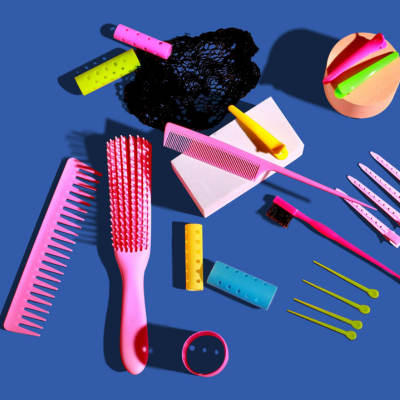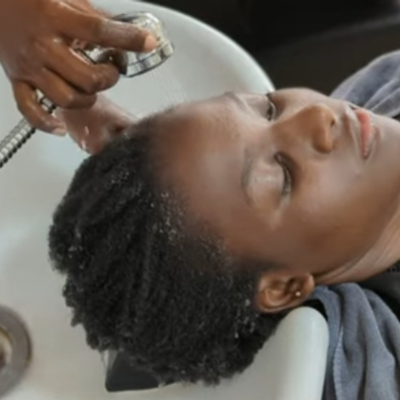- Support 24/7
- +1 (480) 468-4543
- livara@mylivara.com
Which Oils Are The Best For Afro-Textured Hair?

What Do You Need For Hydrated Skin? A Comprehensive Guide
July 31, 2024
How Long Can My Hair Really Grow In A Month?
August 2, 2024
Afro-textured hair, or 4C hair, is a crown of glory, but let’s be real—it can also be a struggle to deal with. Between the dryness, the shrinkage, and the constant search for products that actually work, it feels like we’re on a never-ending quest for healthy hair. One key weapon in our arsenal? Oil. Natural oils, that is. They’re not just fancy additives to make your shinier; they provide the nourishment our hair craves. While moisturizing products are your hair’s lifeline, hair oils are the unsung heroes that lock in that hydration, preventing your precious strands from turning into a dry, brittle mess.
But let’s be honest, the world of hair oils can be downright overwhelming. Supermarket shelves are a jungle of different hair oil products, some with sleek packaging often overshadowing what’s truly good for your hair. Who hasn’t been lured in by the image of flowing, shiny hair on a product, only to be disappointed when it doesn’t work the same magic on your coils?
It’s time to cut through the noise and discover which oils are truly your hair’s best friends. We’re diving deep into the world of hair oils, uncovering the ones that truly nourish and transform 4C hair. From understanding your hair’s unique needs to mastering the art of oil application, we’ve got you covered. So, let’s get into it!
Understanding Your 4C Hair
Before we dive into the oil options, it’s important to understand the specific challenges of 4C hair. 4C hair is a type of hair texture characterized by its extremely tight coils. It’s often described as fragile, and prone to dryness. Because of its unique structure, the natural oils produced by the scalp struggle to reach the hair ends, making it particularly susceptible to dryness and breakage.
Even the most diligent moisturizing routines can fall short as hydration escapes, leaving your hair dry still. That’s where hair oils step in as the ultimate moisture-lockers. Hair oils are often referred to as sealants—they form a protective layer over your strands, preventing moisture from slipping away.
The Science Behind Hair Oils
Natural hair oils are the ultimate treat for 4C hair. They are primarily composed of fatty acids, which are essential for maintaining hair health. Packed with essential nutrients, they nourish and strengthen each strand, helping to combat dryness and breakage. With the right oil, you can unlock your hair’s full potential and achieve the soft, bouncy, and healthy hair you’ve always desired.
Benefits of Natural Oils for Afro-Textured Hair
- Deep conditioning: Hot oil treatments penetrate the hair shaft to deliver intense moisture.
- Strengthening: They infuse hair with vitamins and minerals to boost strength and elasticity.
- Sealant: Oils create a protective barrier to prevent moisture loss.
- Scalp health: Nourish the scalp, preventing conditions like itching and dandruff.
- Shine enhancement: Natural oils create a lustrous appearance in your hair.
- Detangling: Smooth the hair cuticle, reducing friction and making detangling easier.
Which Oils Are Great For Afro-Textured Hair?
With a plethora of natural oils available, choosing the right one for your afro-textured hair can be overwhelming. Let’s explore some of the most beneficial oils for nourishing your curls (in no particular order):
- Coconut Oil: Deeply penetrates the hair shaft, providing intense moisture. It also has antimicrobial properties, which can help to soothe the scalp.
- Olive Oil: Rich in antioxidants, olive oil helps to protect the hair from damage. It’s also a great emollient, softening and smoothing the hair.
- Jojoba Oil: Closely resembles the natural oils produced by the scalp, making it a great option for balancing oil production. It also hydrates and softens the hair.
- Shea Butter: While technically a butter and not an oil, shea butter is a staple in many natural hair care routines. It’s incredibly moisturizing and protective, and can be used on both the hair and scalp.
- Castor Oil: Known for its thick consistency, castor oil is rich in fatty acids that help to strengthen the hair and promote growth.
- Jamaican Black Castor Oil: Similar to regular castor oil but often considered more potent, Jamaican Black Castor Oil is popular for its ability to promote hair growth and thickness.
- Argan Oil: Packed with antioxidants and fatty acids, argan oil helps to repair damaged hair, reduce frizz, and add shine.
- Avocado Oil: Rich in vitamins A, D, and E, avocado oil helps to moisturize and nourish the hair and promote hair growth.
- Grapeseed Oil: Lightweight and easily absorbed, grapeseed oil is a good option for those with fine or low porosity hair. It helps to add shine and manageability without weighing down the hair.
- Sweet Almond Oil: Similar to jojoba oil in its chemical makeup, sweet almond oil is a good all-purpose oil for afro-textured hair. It helps to moisturize, soften, and add shine to the hair.
Essential Oils
Essential oils, which are highly concentrated plant extracts, provide a range of benefits for hair and scalp health. However, they should never be used directly on the scalp or hair as they can be irritating. Instead, they should be diluted in a carrier oil before use. Here are a few popular essential oils that can be beneficial for afro-textured hair:
- Peppermint Oil: Peppermint oil has a stimulating effect on the scalp, which can help to promote hair growth. It also has a cooling and refreshing sensation that can relieve scalp itchiness. Our menthol (main component of peppermint oil)-infused Tsavorite Clarifying Treatment Hair Shampoo is great for combatting itching and conditions like dandruff.
- Tea Tree Oil: Tea tree oil has antibacterial and antifungal properties, which can be helpful for treating dandruff and other scalp conditions.
How To Incorporate Natural Oils Into Your Haircare Routine
- Sealant: Apply a small amount of oil to moisturized hair to lock in hydration.
- Hot oil treatment: Warm the oil (not too hot) and apply it to your hair and scalp. Cover with a shower cap and leave for 20-30 minutes before shampooing.
- Pre-poo: Apply oil to dry hair before shampooing to protect hair from excess moisture loss.
- Leave-in conditioner: Mix a few drops of oil with your leave-in conditioner for added moisture.
How to Properly Apply Hair Oil
Proper application of hair oil is crucial for maximum benefits. Here’s a step-by-step guide:
- Start at the Scalp: If you’re applying oil to your scalp, gently massage it in circular motions using your fingertips. This stimulates blood circulation and promotes hair growth.
- Work Through the Lengths: Apply the remaining oil to the length of your hair, section by section. Distribute the oil to the lengths of your hair using your fingers. Be careful not to apply too much.
- Focus on the Ends: The ends of your hair are the oldest and most fragile part, so they need extra care. Generously apply oil to the ends to prevent breakage and split ends.
- Distribute Evenly: Use your fingers or a wide-tooth comb to disperse the oil throughout your hair.
Remember: A little oil goes a long way. Avoid overloading your hair, as this can lead to product buildup. Use oils for your hair 2-3 times a week or as needed.
Oiling Low Porosity Hair: A Delicate Balance
Afro-textured hair, particularly Type 4c, often presents a unique challenge: low porosity. This means the hair’s cuticle layers lie flat, making it difficult for moisture, including oils, to penetrate. It’s like trying to pour water onto a leaf; it just beads up and refuses to enter. This is why you’ve probably noticed those water droplets clinging to your strands when you try to wet it. When it comes to oiling, this may be the same case. While this can be frustrating, understanding your hair’s unique needs is the first step to unlocking its potential. Let’s dive into some essential tips to help you effectively oil your low porosity hair.
- Choose the right oils: Opt for lightweight oils that can penetrate the hair shaft. Consider options like jojoba, grapeseed, or argan oil.
- Warm up the oil: Slightly warming the oil that you wish to apply to your hair and scalp can help open the cuticles, allowing better penetration. Place the oil in a vessel and put it over a bowl with some hot water. It should be warm in a few minutes. Make sure the oil is warm—not hot, to prevent burns on your scalp.
- Apply to moisturized hair: Applying oil to moisturized hair helps the product serve its purpose better.
- Less is more: A little goes a long way. Start with a small amount and increase if necessary.
- Focus on the scalp: Nourishing your scalp can promote hair health. Massage the oil into your scalp for improved circulation.
- Deep condition regularly: For maximum benefits, cover your hair with a shower cap and leave the oil on for at least 30 minutes for better oil absorption.
- Clarify regularly: Remove product buildup using a clarifying shampoo to prevent oil from sitting on the hair surface.
Additional Tips
- Patch test: If you have sensitive skin, always test new oils on a small area of skin before applying to your hair. Some people have found that they’re allergic to oils like peppermint, causing adverse reactions like itching to their scalps.
- Consistency: Regular use of oils is key to achieving optimal results.
- Experimentation: Don’t be afraid to try different oils to find your perfect match.
By understanding your hair’s needs and selecting the right oils, you can unlock your hair’s full potential. Remember, healthy hair is a journey, not a destination. Enjoy the process of discovering the oils that transform your hair! And remember, you are a GEM.



